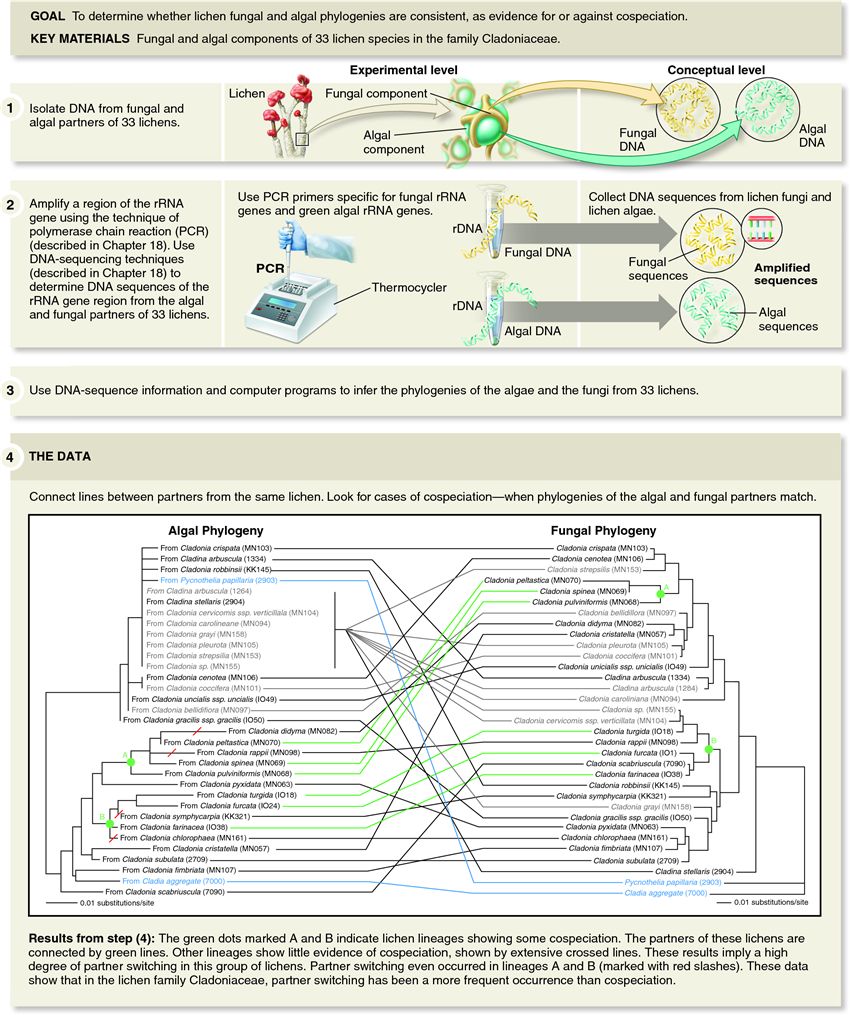 |
| Previous Image | Next Image |
| Description: One of the most interesting current issues regarding symbiotic relationships is the extent to which partners have influenced each other's evolution and diversification; when they have, they are said to have cospeciated (coevolved). In the past it was unclear whether or not lichen fungi and their photosynthetic partners coevolved. The fairly recent development of molecular techniques and computer software for analyzing relationships among microorganisms has allowed researchers to attempt to answer this and many other fundamental questions about lichen biology. Researchers Michelle Piercey-Normore and Paula DePriest devised a way to look for evidence of cospeciation of the fungal and algal partners in a large and diverse lichen group known as the Cladoniaceae. This group of lichens includes the common “reindeer lichen†(Cladonia cristatella). The investigators wanted to know if the pattern of speciation for the fungal partners matched that for the algal partner. The investigators first extracted DNA from the fungal and algal partners in 33 lichens, including diverse species of the genus Cladonia. Next, they amplified a region of the rRNA gene for all samples and determined the sequences of these DNAs. Finally, Piercey-Normore and DePriest used the DNA sequences to produce separate phylogenetic trees for the algal and fungal partners, and they used statistical procedures to test the possibility that the evolutionary divergence patterns of the fungi and algae were linked. The results revealed that the fungal and algal phylogenies did not match, indicating that the patterns of their diversification were not congruent. These data indicated that lichen fungi and algae had not generally influenced each other's speciation patterns. If the lichen fungi and algae had undergone species diversification in tandem, their phylogenies should match, that is, be congruent. Instead, the phylogenetic evidence suggested that lichens often switch algal partners, “trading-up†for better algae. The results of this study, published in 2001, revealed that the lichen symbiosis is more complex than had previously been realized. Picture Stats: Views: 1479 Filesize: 197.39kB Height: 1015 Width: 850 Source: https://biology-forums.com/index.php?action=gallery;sa=view;id=805 |
